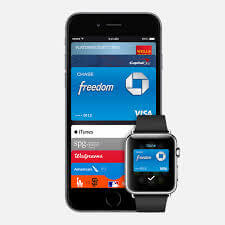
Today, there are very few that will deny the importance of data and analytical decision making. Big Data has been a buzzword for years, but it has finally turned into a reality. Companies like Amazon and Uber dominate their industries with the use of data analytics. They, among many companies, have realized that data is the new way of interacting with customers. Although the shift from brick-and-mortar to mobile has been happening for years in the retail space, Big Data & Analytics is about to make its most significant mark in the retail financial services space with mobile payments.
With the introduction of such innovations as Apple Pay, mobile payments are finally receiving much-deserved attention. This payment method allows consumers to pay for everyday purchases on their mobile devices without the need for plastic or cash. Mobile payments have slowly started to gain traction as consumers, as with every new technology, overcome their skepticism and accept this “new way”.
Mobile payments offer an element of safety that cash and plastic cannot. For example, consumers are beginning to realize that tokenization (substituting a sensitive data element with a non-sensitive equivalent), enabled by fingerprint recognition, significantly prevents the risk of fraud. Tokenization is the type of advantage that contributes to rapid increases in the adoption of this new technology.
The surge in mobile payment adoption will lead to an astronomical amount of new transaction data. Yet, what does that mean, and why does it matter?
Transactional Data
Those that are very familiar with Big Data & Analytics understand that granularity is essential. The ability to expose patterns in data at the lowest level yields the most incredible value. In the case of financial services, the lowest level is customer transactions. As Amazon has shown us, customer data allows organizations (including credit unions) to uncover information needed to deepen relationships with customers and increase satisfaction.
In a recent whitepaper from Filene Research Institute, author Philipp Kallerhoff states:
“Companies, as varied as Amazon, Google, Walmart, and Wells Fargo, are turning to “big data” for member insights that will help them serve clients and capture market share. Big data is the analysis of huge data sets, and while individual credit unions may not have the resources of a corporate giant, advances in data storage and software tools mean that credit unions can start using similar tools and deriving similar value.”
Transactional data only yields value if a credit union has the means to extract this value. Most credit unions feel stuck in a world of data silos where one department enters their data into a system never seen by the rest of the organization. Organizations without data integration and low data quality are less able to execute fact-based decision-making. As Kallerhoff states:
“A prerequisite for developing these (predictive) and other models is a well-maintained database with as much transactional detail as possible. The credit unions that can capture transaction types and locations will come out ahead because transaction origin correlates highly with credit scores and helps to predict future financial products”.
Thankfully, advances in Big Data & Analytics have enabled credit unions to reap their data benefits. Credit unions now have a means (using CUSO collaboration) to integrate and analyze their data at the transaction level. Transactional data can be used for predictive analytics that enables credit unions to predict the next best product, execute association analysis, customize the member experience, competitively priced loans, execute targeted marketing strategies, and much more.
CU Wallet & Big Data
Lately, there has been a considerable amount of buzz about mobile payments in the credit union industry. With the known value of transactional data, companies such as Apple, Google, Amazon, Lending Club and PayPal are eager to get their share of the lucrative mobile payments market. These new entrants are interested in skimming the profitable, information-rich business transaction side while leaving the less lucrative and highly regulated settlement side to the banks and credit unions.
Fortunately, one company aims to deliver on the promise of mobile payments to the credit union industry. CU Wallet is a Credit Union Service Organization (CUSO) offering mobile payment solutions to credit unions. Rallying North American credit unions around the adoption, deployment, and ongoing management of mobile device banking, payments and security has created a tremendous win for the credit union industry. CU Wallet is a credit union solution that keeps the wealth of transactional data in the hands of credit unions, rather than with the likes of Apple and Google.
Time is of the Essence
As mentioned earlier by Kallerhoff, most credit unions lack the necessary technology to derive value from transactional data. Credit unions that want to come out ahead need to have a well-maintained database with as much transactional detail as possible. With the explosion of mobile payment data, credit unions need to act now. Data will soon prove to be credit union’s most valuable asset. However, those that are ill-prepared to deal with the data will reap no value. The failure to adopt Big Data & Analytics solutions may result in corporate giants using transaction data to lure away credit union members.
This year is crucial for the credit union movement. Credit unions can either ignore the importance of payments and transactional data or get ahead of their competitors by leveraging CUSO collaboration for their payment and Big Data & Analytics solutions. With newly introduced advancements in Big Data & Analytics, credit unions can now capture their transactional data value. They need to work together to keep as much of this valuable asset in the industry as possible.









